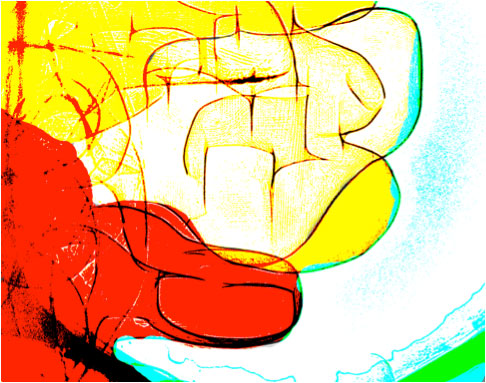| Posted: Jan 26, 2016 | |
CaO particles as promising templates for hierarchical porous graphene growth |
|
| (Nanowerk Spotlight) Many biomaterials such as bones or shells have a hierarchical structure that provides them with exceptional mechanical and load-bearing properties, even though the building blocks of these structures may themselves have very poor mechanical properties. | |
| These hierarchical structures are of great interest to nanotechnology researchers as well. Over the past few years, a number of biomaterials and biostructures have been introduced into their research in order to fabricate functional hybrid nanocomposites with hierarchical nanostructures (see our previous Nanowerk Spotlight: "Peacock feathers and butterfly wings inspire bio-templated nanotechnology materials"). | |
| For instance, egg-shell membrane, wood and other plants organisms with hierarchical porous structures, have been used as template to synthesize hierarchical porous functional nanomaterials. The specific hierarchical porous structures of these materials have been observed to influence the gas sensing and photocatalysis properties of biomorphic nanomaterials. | |
| "Hierarchical porous carbon/graphene (HPC/HPG) materials have been intensively investigated over the past decades," Qiang Zhang, an associate professor in the Department of Chemical Engineering at Tsinghua University, tells Nanowerk. "These materials are demonstrated as promising electrode materials for various systems, such as lithium-ion batteries, lithium-sulfur batteries, supercapacitors, and fuel cells, with a remarkable capacity, high efficiency, long stability, and excellent rate capability." | |
 |
|
| Morphology of as-obtained hierarchical porous carbon/graphene material. (Image: Department of Chemical Engineering, Tsinghua University) | |
| Generally, researchers employ fabrication strategies with a multistep process or/and multiscale templates to obtain the desired hierarchical porosities in their materials. Chemical vapor deposition (CVD) growth on the copper foil has been regarded as the most effective method to fabricate high quality graphene films, while some porous metal/metal oxide substrates were recently demonstrated as catalytic templates to create structural hierarchy for graphene materials through a one-pot synthesis. | |
| Based on this concept, Cheng Tang, a PhD candidate in Zhang's group, has proposed the employment of hierarchical porous calcium oxide (CaO) particles as effective catalytic template for the facile CVD growth of graphene. | |
| These findings have been published in Advanced Functional Materials ("CaO-Templated Growth of Hierarchical Porous Graphene for High-Power Lithium–Sulfur Battery Applications"). | |
| This is the first time that CaO, commonly known as quicklime or burnt lime, has been utilized for the CVD growth of graphene. | |
 |
|
| Schematic illustration of hierarchical porous graphene obtained by CVD growth on CaO templates. a) Porous CaO templates. b) Continuous graphene layers cast on the CaO templates after CVD growth. c) HPG obtained after the template removal, exhibiting a hierarchical structure with macrosized strutted cavities (the space surrounded by graphene sheets), mesosized wrinkled pores (illustrated as the light-colored circles on the sheets), and microsized in-plane vacancies (as illustrated in the enlargement). (Reprinted with permission by Wiley-VCH Verlag) (click on image to enlarge) | |
| "We found that CaO nanoparticles can serve as effective catalysts to stimulate the CVD growth of ultrathin graphene with a self-limiting behavior due to vast surface defects and step edges," says Tang. "This is an exciting result, as CaO is a very common and low-cost material with facile purification and promising cyclic utilization. Additionally, various hierarchical structures can be readily obtained for CaO, making it a versatile strategy to fabricate hierarchical porous graphene materials with tunable structural hierarchy." | |
| He adds that the gas atmosphere during CVD and the nanostructure of the used catalysts have a significant impact on the graphitization degree and hierarchical porosity of the resultant materials. | |
| As the team demonstrated in their experiments, the as-fabricated material exhibits abundant microsized in-plane vacancies, mesosized wrinkled pores, and macrosized strutted cavities, thereby contributing to a strong surface entrapment, short ion diffusion pathways, rapid mass transport, low interfacial resistance, and robust framework. | |
| "We found that the hierarchical porous graphene material we fabricated can serve as a favorable scaffold for Li-S battery cathodes with superior rate capability, high coulombic efficiency, and excellent stability," concludes Zhang. | |
 By
Michael
Berger
– Michael is author of three books by the Royal Society of Chemistry:
Nano-Society: Pushing the Boundaries of Technology,
Nanotechnology: The Future is Tiny, and
Nanoengineering: The Skills and Tools Making Technology Invisible
Copyright ©
Nanowerk LLC
By
Michael
Berger
– Michael is author of three books by the Royal Society of Chemistry:
Nano-Society: Pushing the Boundaries of Technology,
Nanotechnology: The Future is Tiny, and
Nanoengineering: The Skills and Tools Making Technology Invisible
Copyright ©
Nanowerk LLC
|
|
|
Become a Spotlight guest author! Join our large and growing group of guest contributors. Have you just published a scientific paper or have other exciting developments to share with the nanotechnology community? Here is how to publish on nanowerk.com. |
|
